Going on a trip to Tajikistan soon? Sweet! Here are some things you need to know before you travel to Tajikistan.
When I told people I was going to Tajikistan, most of the responses I got involved confused smiles of shallow acknowledgement as their brains assessed 1) if they knew where Tajikistan is, and 2) whether or not I was likely to be bombed or kidnapped in Whozawhatsit-stan.
(Answers:
1) In Central Asia between Uzbekistan, Kyrgyzstan, and Western China.
2) No, unless you count being kidnapped and forced to eat by friendly strangers.)
Their befuddled reactions were understandable. Landlocked, isolated, and blessed with dubious infrastructure, the smallest of the Central Asian ‘stans isn’t on most travelers’ maps, let alone the average person’s radar.
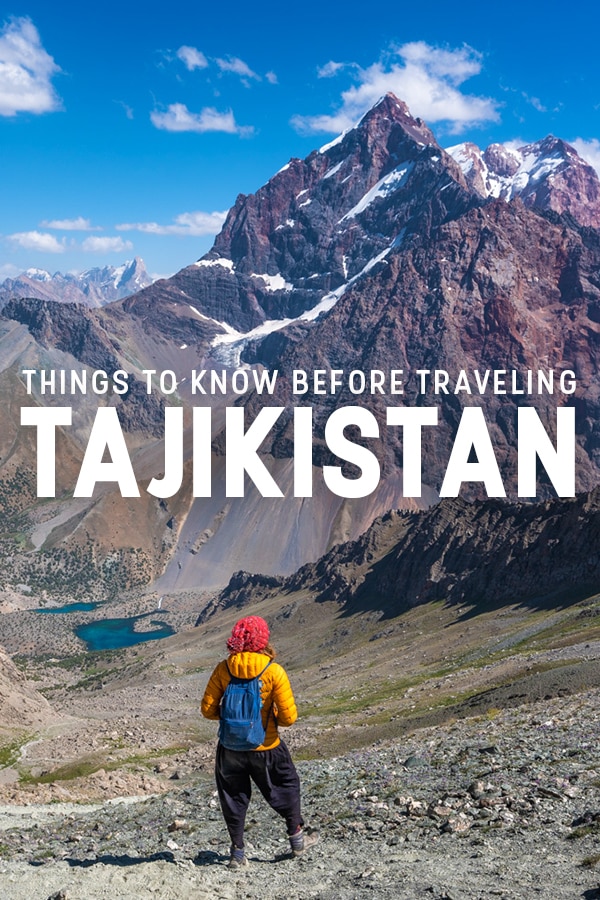
Pin it!
Because of this, information on traveling Tajikistan can be a bit spotty. Though immensely rewarding and perpetually stunning, traveling in Tajikistan is often an imprecise art—you’ll see what I mean once you try to find your first long-distance taxi—so a bit of pre-trip preparation will do you a world of good.
In the name of helping out y’all fellow travelers, here are some things you should know before you travel to Tajikistan:
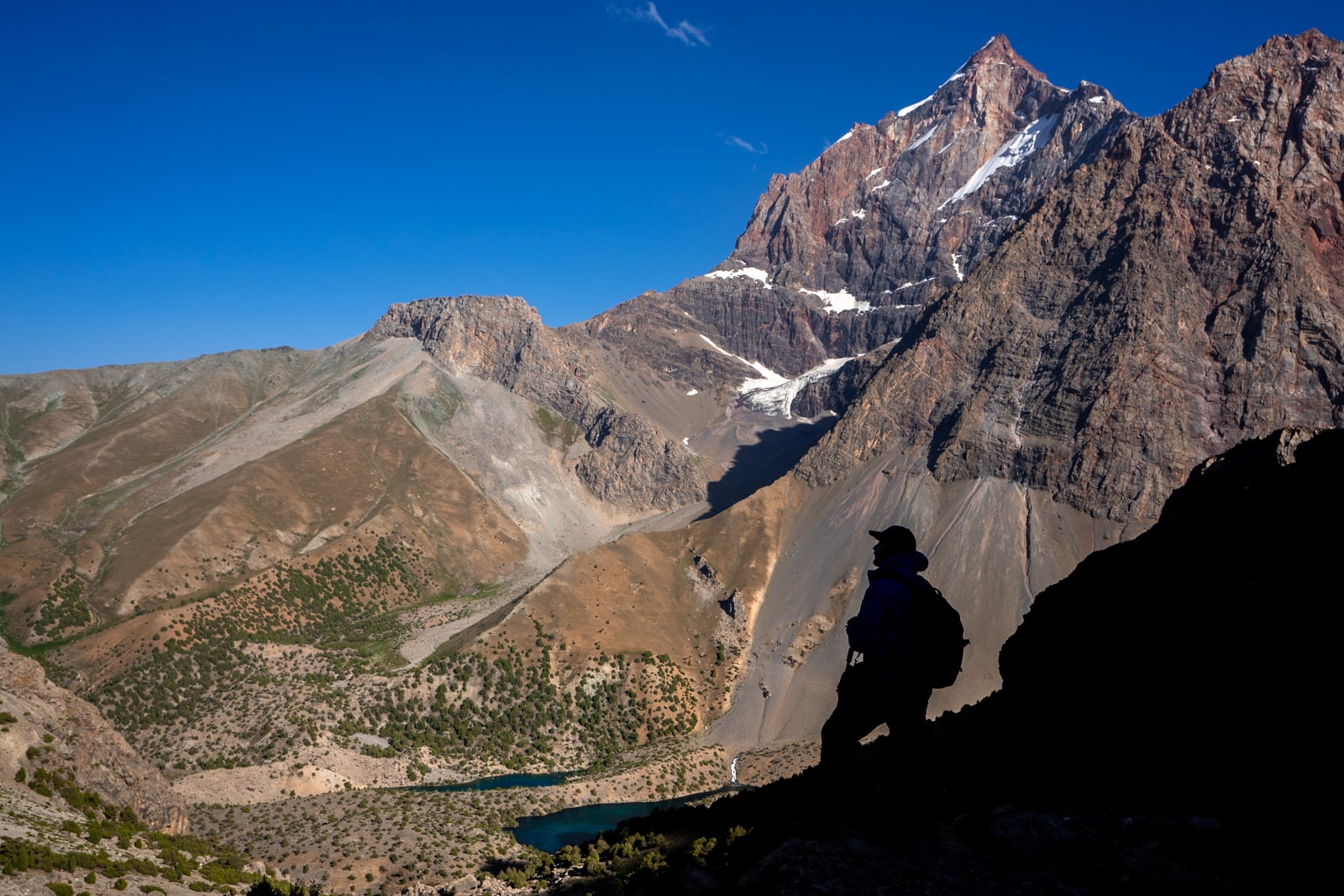
A trekker on the way down to Alauddin Lake in the Fann Mountains
10 things to do to prepare for travel to Tajikistan
1. Get on that e-visa ASAP
A bit of bureaucracy is always necessary before the fun can begin. Unless you’re from a former Soviet Union country, you probably need a visa for Tajikistan.
These days, nationals of 121 countries can snag e-visas online via the official Tajikistan e-visa portal. Do not use any other website, they’re just there to steal your soul/rip you off. A 45-day Tajikistan visa is US$50, plus an extra US$20 if you need a GBAO permit to go to the Pamir region.
There’s no limit to how early you can apply, and the visa period starts once you enter the country. Travelers have reported delays in receiving e-visas in recent months, so try to apply for your e-visa several weeks before your plan to travel to Tajikistan.
2. Find fat stacks of cash
Cash is king in Tajikistan, but ATMs can be fickle beasts. Cash isn’t always available in ATMs, and in places like Murghab in the eastern Pamir Highway, there aren’t any ATMs at all!
Luckily, there’s always someone around who can change US dollars to Tajik somoni. Many homestays and businesses accept dollars for larger payments. By all means, pay your $30 stay with US dollars, but please don’t be that tourist who tries to buy a 25 cent ice cream with a $5 bill.
To avoid getting caught in a cashless crunch, I recommend bringing US dollars to Tajikistan. How much you bring depends on your travel budget, but even budget travelers are advised to bring several hundred dollars in cash when traveling to Tajikistan.
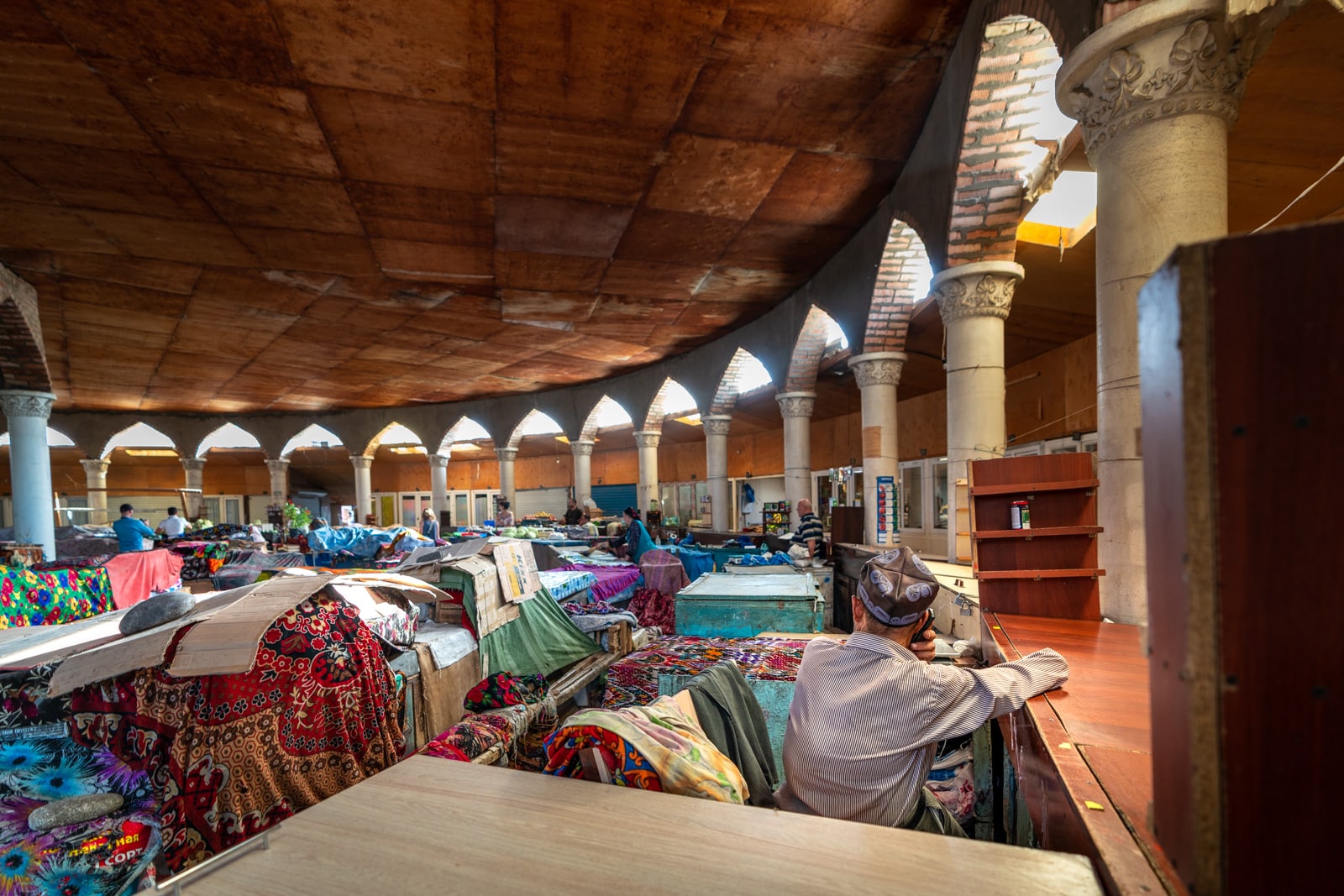
When my group arrived in Panjakent, everything was virtually closed because of Eid al-Adha… but there was still someone hanging around willing to change US dollars to Tajik somoni. Cash is king!
3. Learn a little language
Warm hearts and curious souls run rampant in Tajikistan, but unfortunately, many of them do not speak English. All of my favorite interactions with locals in Tajikistan were in Russian; you can’t deny the necessity of shared language for having deeper conversations. So before visiting Tajikistan, try to learn a little language.
Tajik is the national language of Tajikistan. Though written using the Cyrillic alphabet, this Persian language is extremely similar to Iranian Farsi and the Dari spoken in northern Afghanistan. Farsi is a beautiful tongue used throughout history by Persian poets such as Rumi, Hafez, and Rudaki, well worth looking into if you’re interested in language or poetry.
Where to learn Farsi/Tajik: I recommend the Pimsleur Farsi audio course to learn a smidge of Tajik before traveling to Tajikistan.
Due to Tajikistan’s ex-Soviet status, Russian is a common second (or third, or fourth) language. The older generation is very likely to speak it, and many students still learn Russian in school. Travel-wise, Russian is also more useful than Tajik/Farsi: you can use it throughout the Central Asian ‘stans, and signage is written in Cyrillic.
Where to learn Russian: Duolingo is a good free resource for learning basic Russian words and grammar, while Pimsleur’s Russian course is best for learning conversational Russian before your trip to Tajikistan.
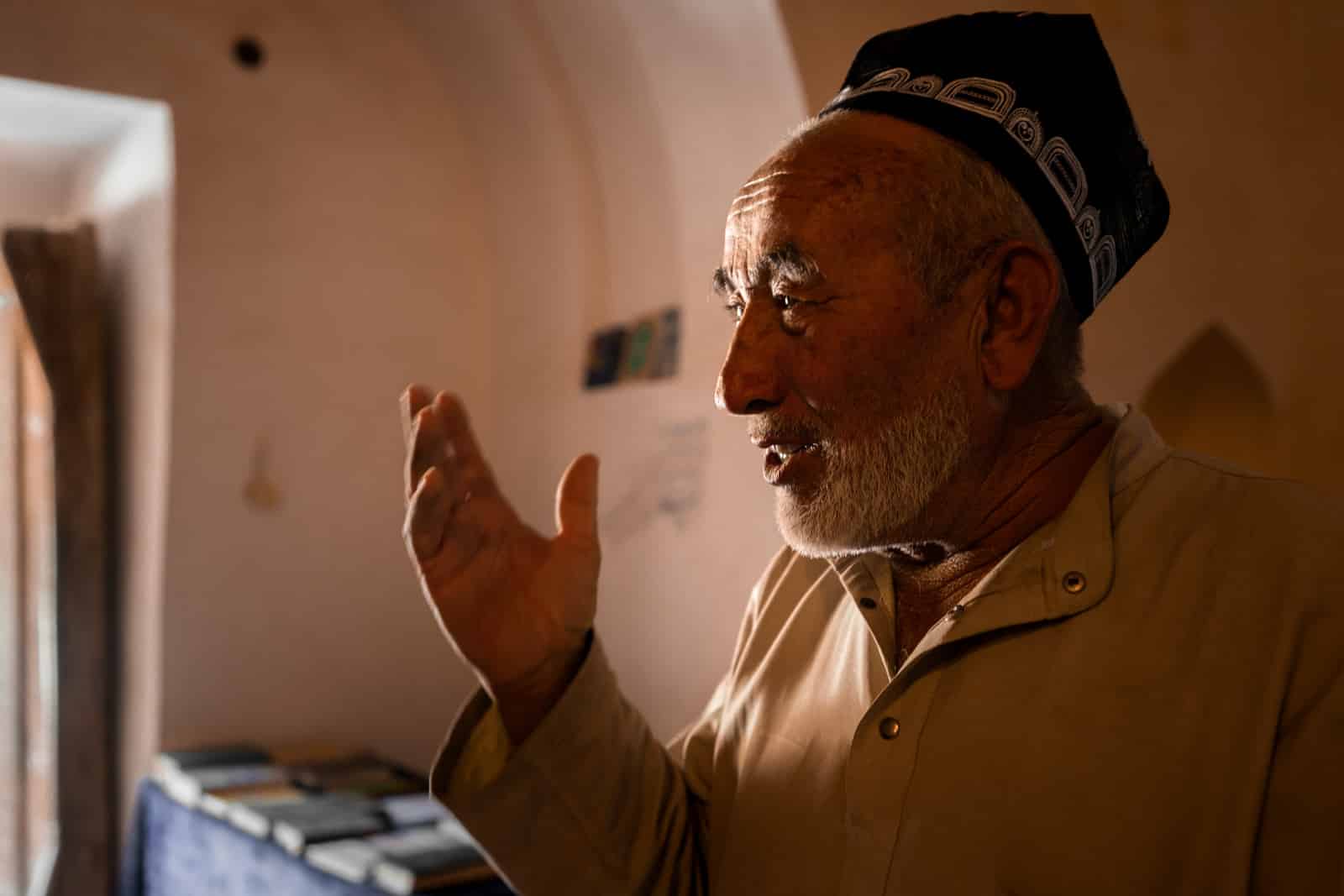
The old caretaker of the mausoleum of Mohammed Bushoro in Mazari Sharif (no, not THAT Mazar-i-Sharif) was friendly, witty, and immensely knowledgeable… but only spoke Russian and Tajik.
4. Leave the booty shorts at home
Though relatively moderate when it comes to religion, Tajikistan is still an Islamic country. Local men and women dress modestly. Despite the trekkers you might see wandering around in short shorts, in the name of responsible travel and cultural respect, I recommend you dress modestly when going to Tajikistan.
Wear whatever you will while trekking (ideally something more than leggings and a sports bra, ladies) but in towns and villages both genders should try to at least cover shoulders and knees. Short-sleeved shirts are fine, but long pants are recommended.
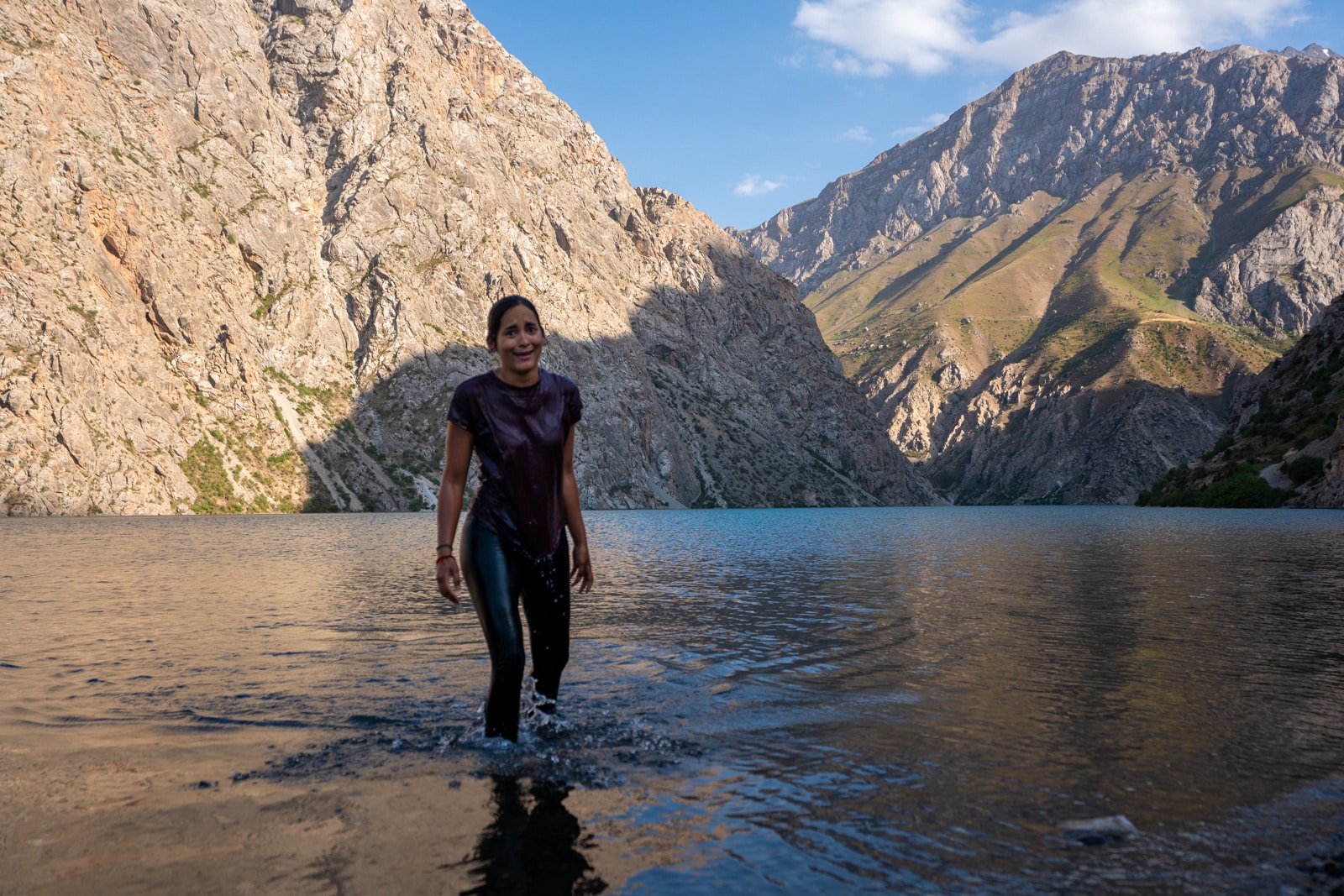
An example of what I wore when swimming in the seventh (freezing AF) lake at Haft Kul as local boys watched: t-shirt and leggings.
Swimming is trickier business in the land of alpine lakes. Men can jump in wearing shorts or boxers, but ladies, we’ve gotta be a bit more careful. If there’s really no one around you can don a bathing suit, but I’d recommend wearing some kind of clothes. A t-shirt plus shorts or leggings would be best—you never know when some shepherd is going to pop out of nowhere with his flock!
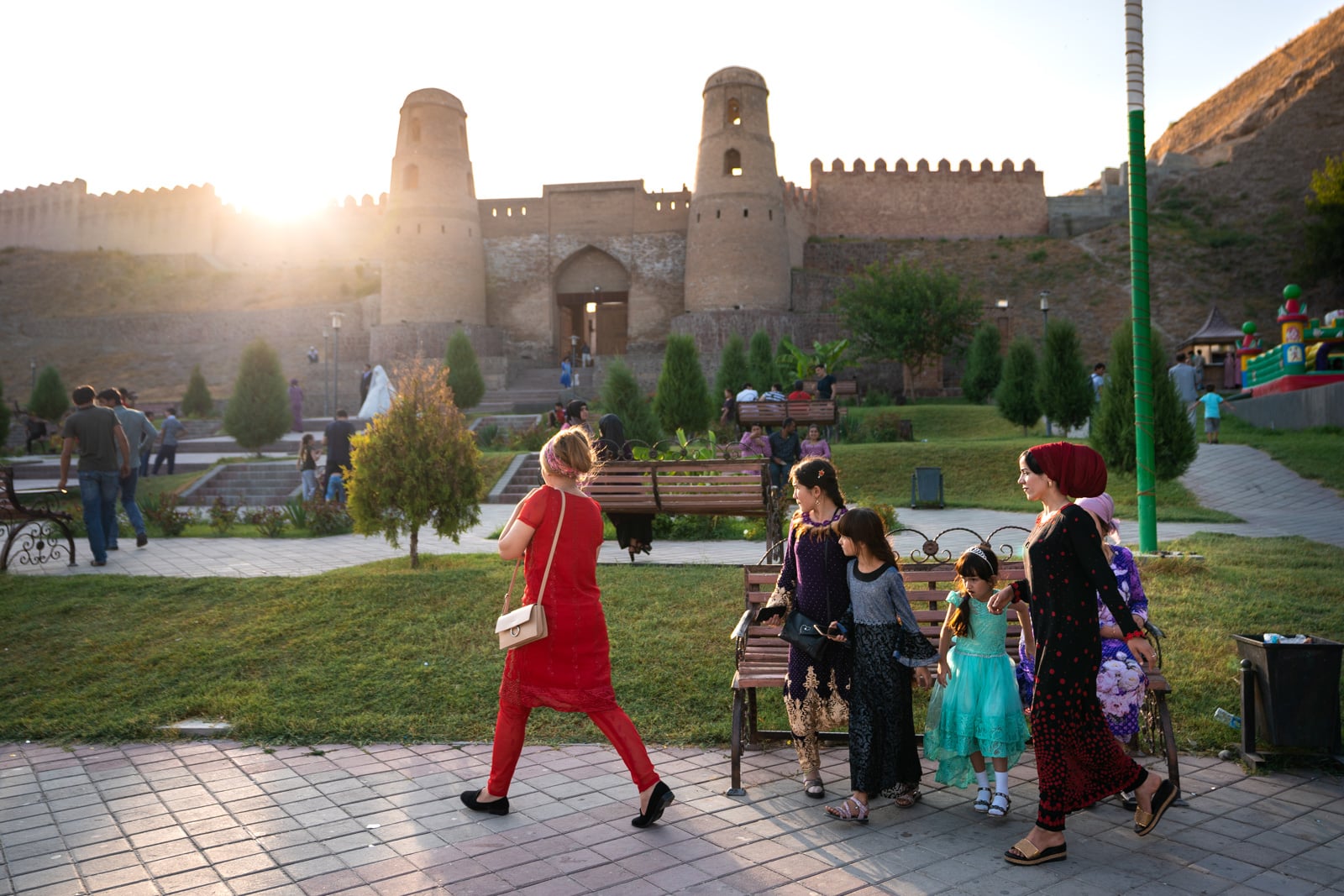
An example of the women’s clothing you’ll see all over Tajikistan: short or long-sleeved shirts called kurtas, sometimes a headscarf, always long pants.
5. Forget about toilets
Push porcelain thrones out of your mind when traveling to Tajikistan. They’re only good for hemorrhoids anyway.
Once you get out of cities and towns, toilets become rather dire in Tajikistan. “Drop toilets”, essentially holes dug into the ground, are the most common form of toilets throughout the country. They range from clean to nightmare, but there’s not much you can do about them aside from use them and/or Whatsapp photos of them to friends and family (okay, maybe that’s just me).
Carry hand sanitizer and soap; sinks for washing hands are not a given. Soap even less so.
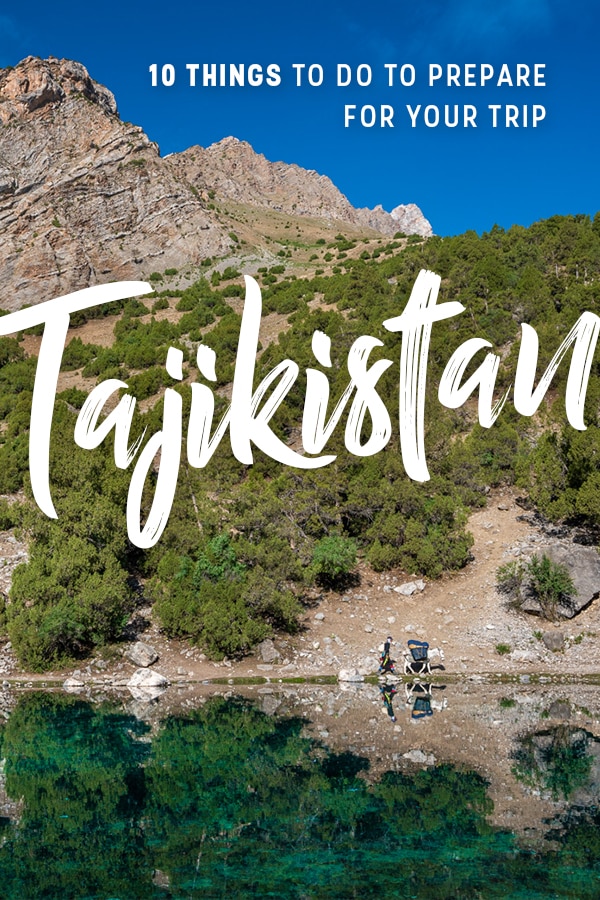
Helpful? Pin it!
6. Scope out some homestays
Infrastructure ain’t great in Tajikistan, but if there’s one thing they’ve got down pat, it’s homestays. They’re all over the country, even in its most remote corners; use Tajikistan’s homestay network to go a bit beyond the beaten tourist track.
Homestays are the easiest way to get a glimpse of local life in Tajikistan. Most homestays cost around US$15 per person per night, breakfast and dinner usually included. Local lunch can be tacked on for an extra couple of dollars.
Each region has its own homestay network, and you can learn more about options on their websites or in their offices. Homestays are organized by location, with phone numbers listed for each home.
You can book stays through local organizations, however it’s okay to call the homestay hosts yourself… or simply show up on the same day (my specialty). In popular tourist destinations homestays are also listed on major booking websites like Booking.com or Airbnb.
For more info about which places offer homestay options, check out my Tajikistan itinerary.
Local homestay organizations in Tajikistan
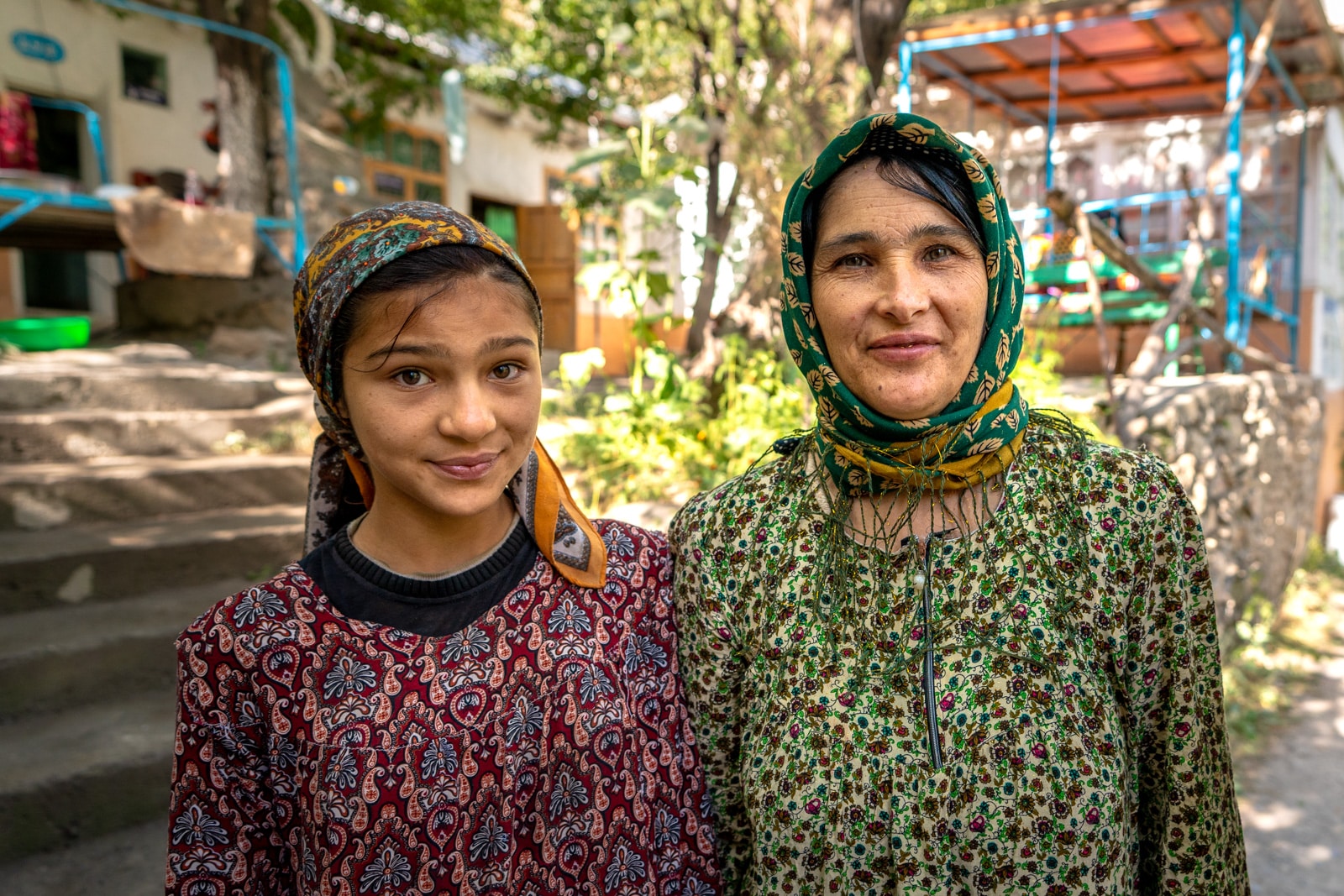
Some of the friendly family who runs the 3 Juniper Branches homestay in Haft Kul (The Seven Lakes)
7. Pack altitude medicine and patience
You’re gonna be high in Tajikistan. Real high.
Especially if traveling the Pamir Highway, you’ll likely travel over 4,000 m+ (13,000’) mountain passes and sleep at altitudes most of us grubby lowlanders aren’t used to. At these elevations, altitude sickness is a very real risk, and travelers need to take care. And no, you’re not a wuss if you get altitude sickness—it can affect anyone regardless of fitness level at altitudes higher than 2000 meters.
Altitude sickness is serious business. I know firsthand: I actually almost died from it in the Pamir (oops). Staying hydrated is a must. If you know from prior experience that you’re particularly prone to altitude sickness, stock up on a drug called Diamox; you can take it 24-48 hours before ascending to preemptively to protect yourself from altitude sickness. However, if you have sulfa drug allergies like me, you should stay away from Diamox.
Finally, be patient. When climbing in elevation, you need to take time to get acclimated. Don’t rush from Dushanbe all the way to Murghab in one long haul; plan a few stops of several days between each leg of your journey so your body can get used to the shift. Roads are bad and transportation infrequent in Tajikistan; you can’t always count on easily getting to lower altitudes if necessary.
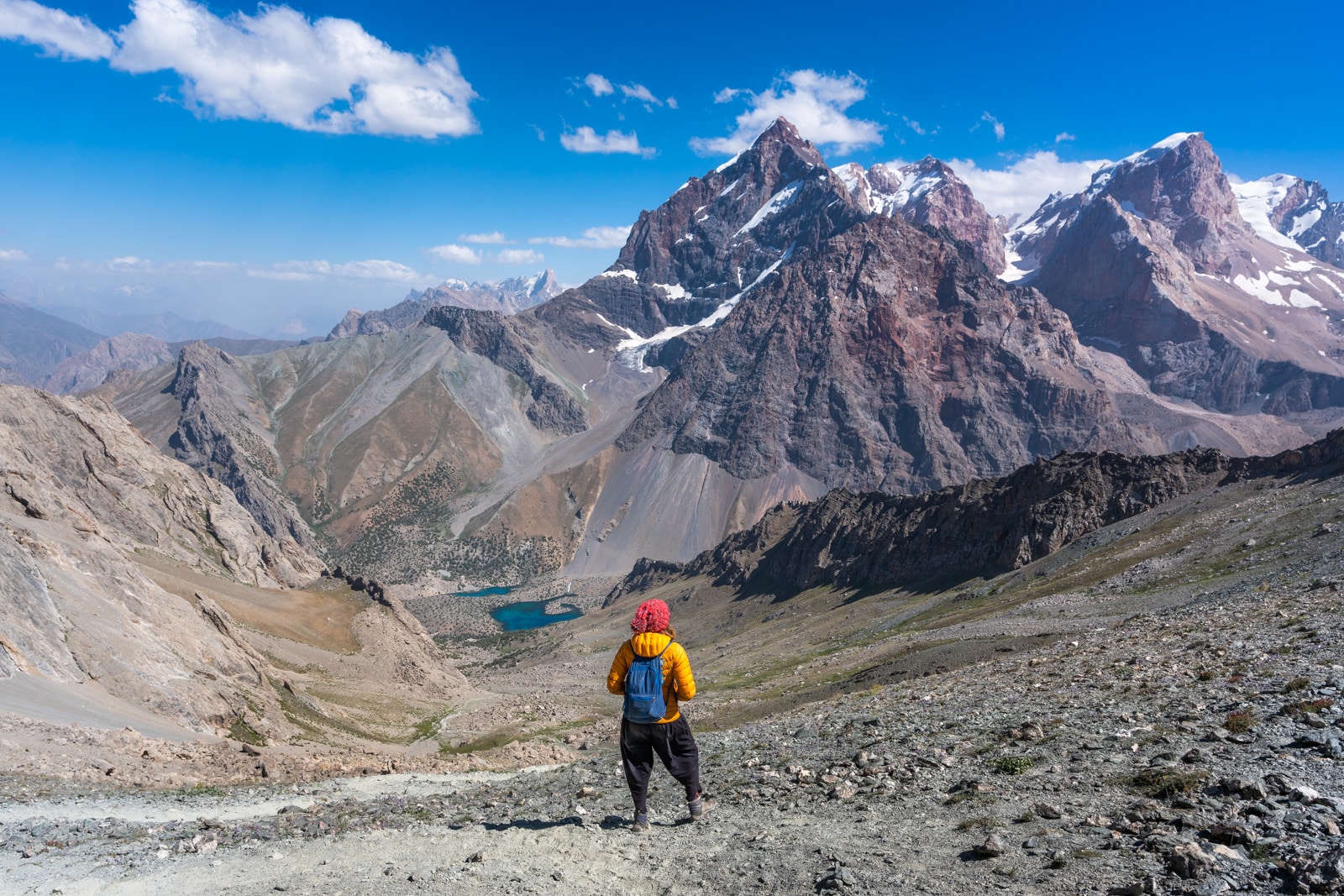
Huffin’ and puffin’ at the 3,860m (12,660′) Alauddin Pass in Tajikistan’s Fann Mountains
8. Ensure you have a way to keep water clean
Hygiene standards are poor in Tajikstan; diarrhea and stomach struggles are standard for travelers.
There’s not so much you can do about food in rural areas when options are limited, but you can ensure you have clean water both before your stomach woes and after you’ve exploded on the toilet a few times and need to rehydrate ASAP.
Steripens are my favorite method of sterilizing water. Portable and rechargeable, they use UV light to sterilize up to one liter of water at a time. Rather than buying endless bottles of water and contributing to the world’s plastic waste crisis, pack a Steripen and a reusable water bottle and fill up at mountain springs, small rivers, or the water pumps found throughout villages in Tajikistan. Both the earth and your bowels will thank you. So make sure to buy A Steripen before traveling to Tajikistan.
Note: If Steripens don’t float your boat for whatever reason, I have traveler friends who use and recommend Life Straws or Life Straw bottles to purify their water.
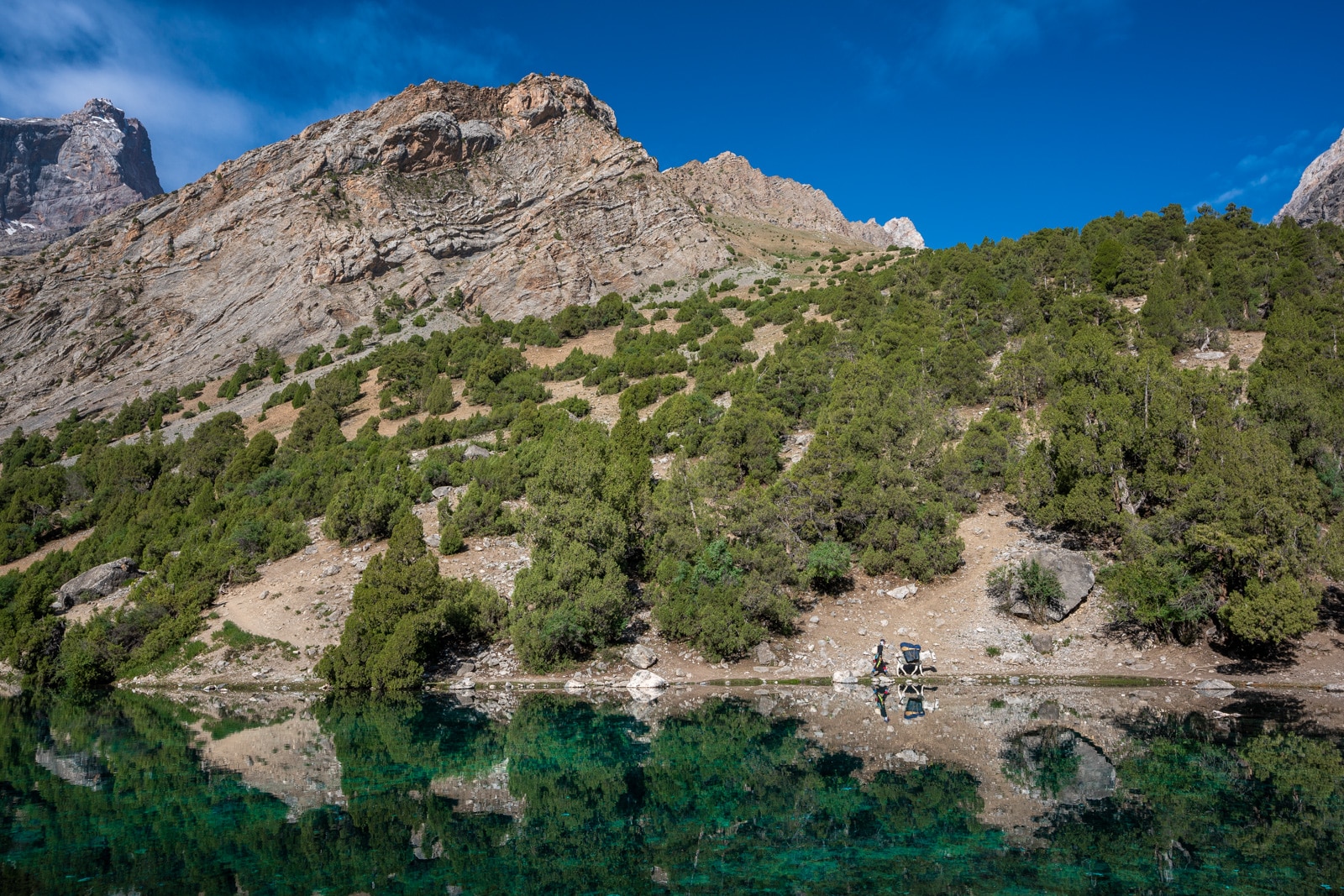
A lot of water in Tajikistan LOOKS clean, but many potential water sources are tainted by livestock that you may or may not see and need to be purified before drinking
9. Prepare your stomach for a whole lotta bread and mutton… or learn how to say no.
An example of the food situation in Tajikistan: while chatting over tea one morning, my host mother in Shaimak village spoke dreamily about her daughter-in-law bringing cabbage from the nearest town. Yes, cabbage. Have you ever seen someone discuss cabbage with a sparkle in their eye? I didn’t think so.
Despite its position along historic Silk Road trade routes, Tajik food can be extremely basic. Meat, milk products, and starches (bread, potatoes, rice) make up the vast majority of cuisine you’ll encounter in the country. Salt and pepper are considered spices, and vegetables can be rare. Boiled, fried, or otherwise cooked-to-death mutton is particularly ubiquitous.
If you’re vegetarian or vegan and hoping to travel to Tajikistan, you absolutely need to learn a few phrases and dishes ahead of time. Tajiks understand what vegetarian diets entail—vegan diets less so—but you need to convey your needs to them as soon as possible. It’ll help you avoid awkward situations in people’s homes, as well as save you from eating bread and “salad” of tomatoes and cucumbers for every meal.
If you’re vegetarian or vegan, below are some useful phrase you should learn before going to Tajikistan.
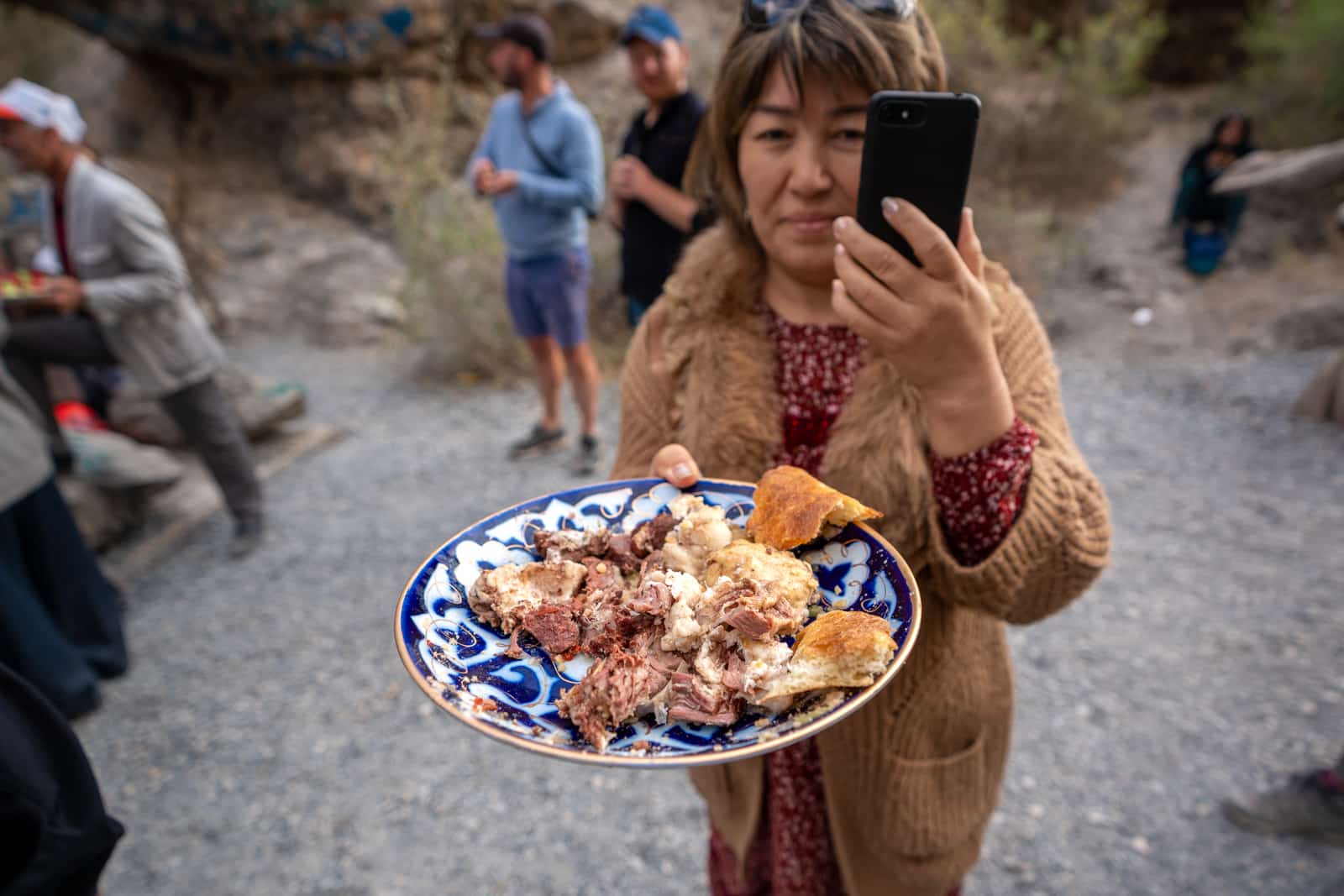
A woman offering me a bite of boiled mutton at a waterfall near Iskanderkul Lake
“I don’t eat meat”
- Tajik: Ман гӯшт намехӯрам | Man guscht nemikhuram
- Russian: Я не ем мяса | Ya ne yem miyasa
“Meat”
- Tajik: Гушт | Guscht
- Russian: Мясо | Miyasa
“Milk”
- Tajik: Шир | Shir
- Russian: Молоко | Maloko
“Vegetables”
- Tajik: Сабзавот | Sabzavot
- Russian: Обощи | Oboshi
“Beans”
- Tajik: Лӯбиё | Lubiyo
- Russian: Фасоль | Fasol
Kurutob and shakarob: Tajikistan’s best traditional dishes are actually vegetarian and vegan, respectively. Made with bits of stale bread, oil, tomatoes, onions, herbs, and spices, they’re delicious and typically served without meat. Kurutob includes yogurt-like kefir, while shakarob is tomato-based.
Mushkichiri: A hearty bean stew served in Tajikistan.
Note: Know that even “vegetable” versions of food like samsa pastries can sometimes contain meat, and seemingly vegan dishes like plov without meat are still cooked in animal fat.
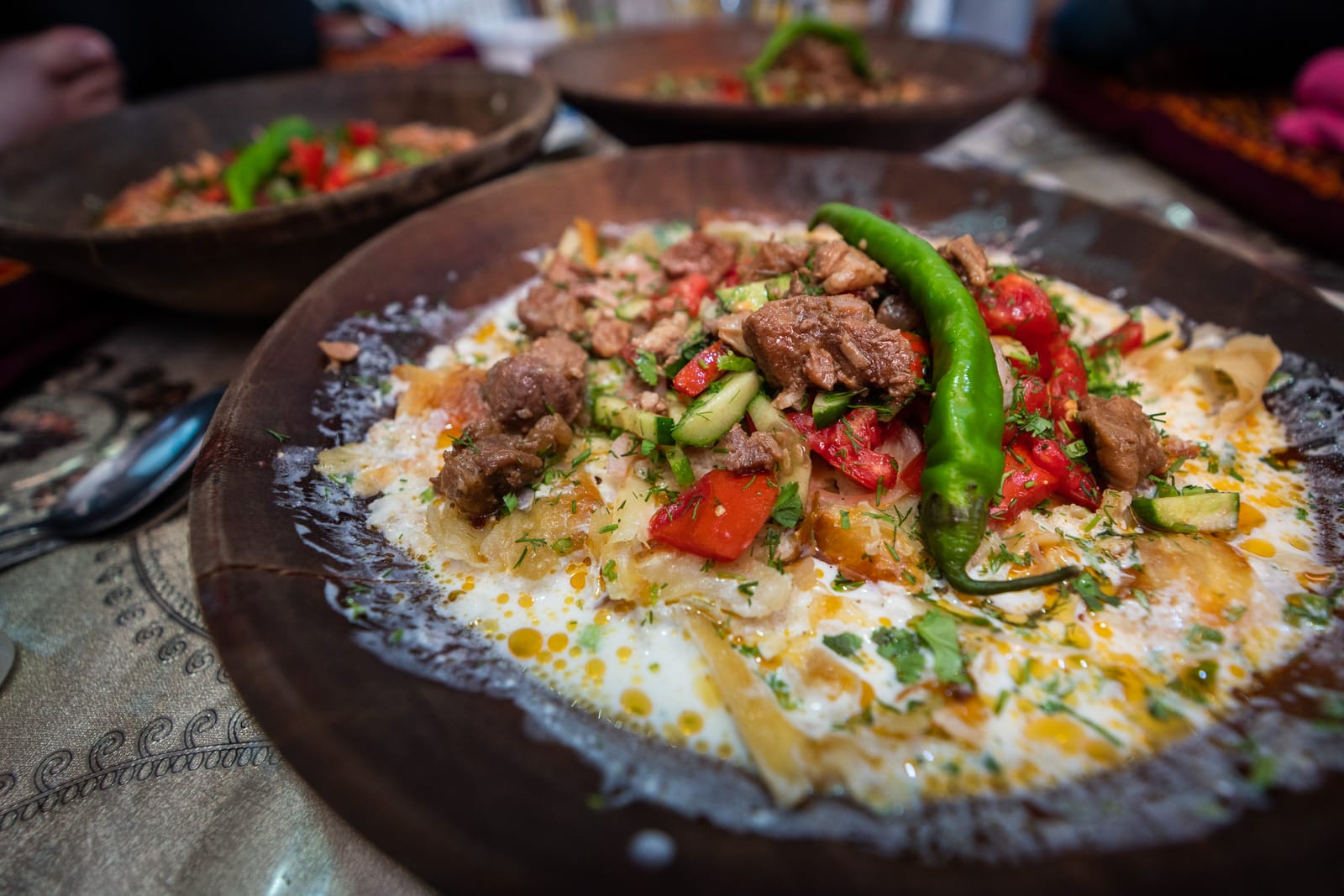
A bowl of kurutob (… with meat added because #Tajikistan) in Dushanbe, one of the few good options for vegetarians in Tajikistan
10. Stock up on warm, quick drying clothes
93% of Tajikistan is mountains. If there’s one thing you can expect in the mountains, it’s unexpected weather.
Mountain weather can change at the drop of a hat. If you’re caught unprepared, you’re going to be unhappy. And wet. And cold. It’s going to suck.
Do yourself a favor, and pack at least two sets of warm, quick drying clothes. Tajikistan is not like Nepal; you can’t count on buying trekking gear there. Nylon and polyester dry quickly. Merino wool dries less quickly, but is a wise choice as it’s lightweight and stays warm when damp. (Things that do not dry quickly: jeans, cotton everything.) If one set of clothes gets wet, you can change and hang the damp set to dry.
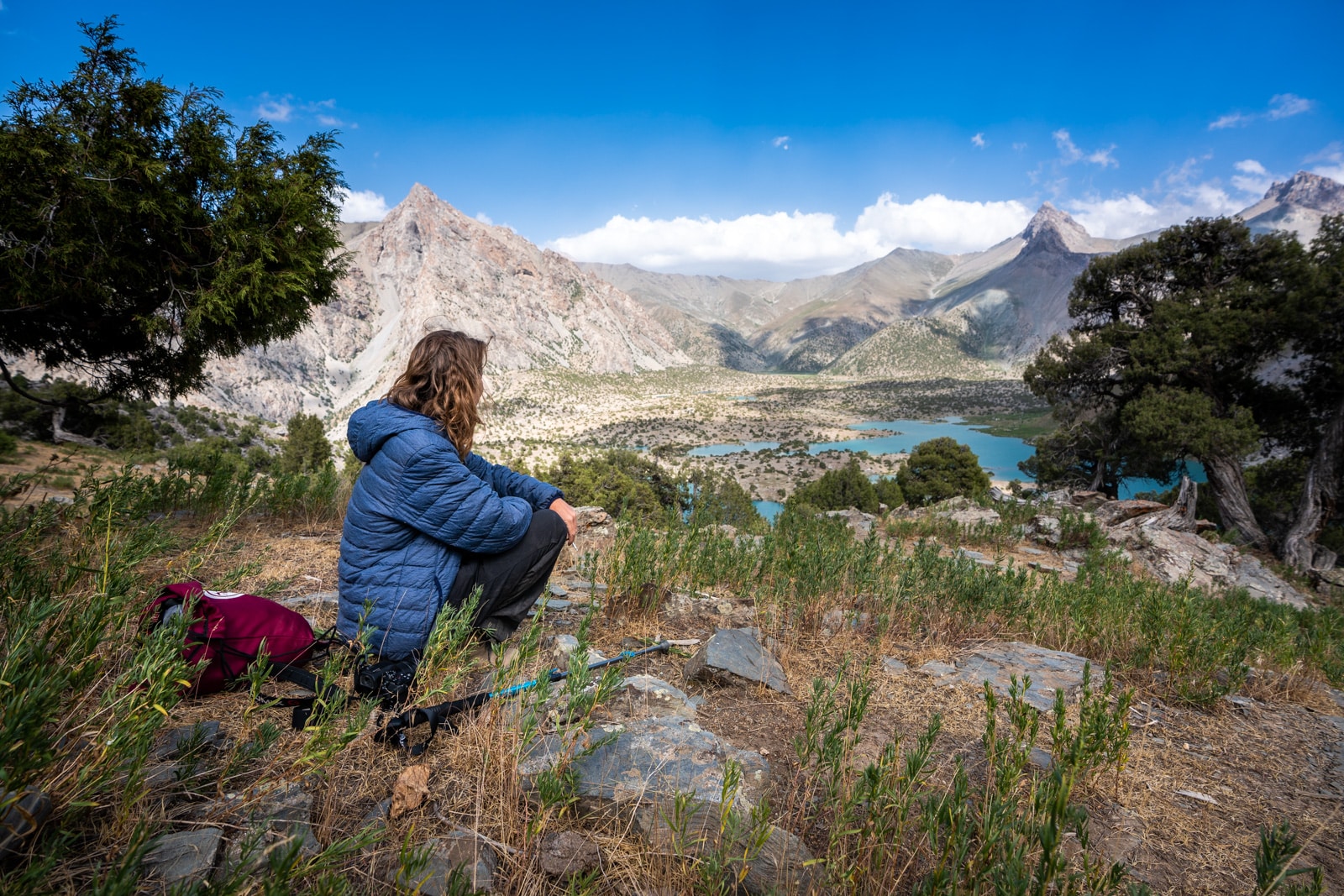
A trekker staying nice and toasty during a cool afternoon near Kulikalon Lake
11. Get stoked
Okay, okay, this is technically #11. Whatever.
Tajikistan’s landscapes are gorgeous, its people a delight. You’re about to embark on a grand adventure. Though things may not always go according to the plans you’re crafting now, no need to worry: you’ll have the time of your life.
I tried to cover everything I think you need to know for travel in Tajikistan, but no list is perfect. Do you have extra tips or questions? Let me know in the comments.
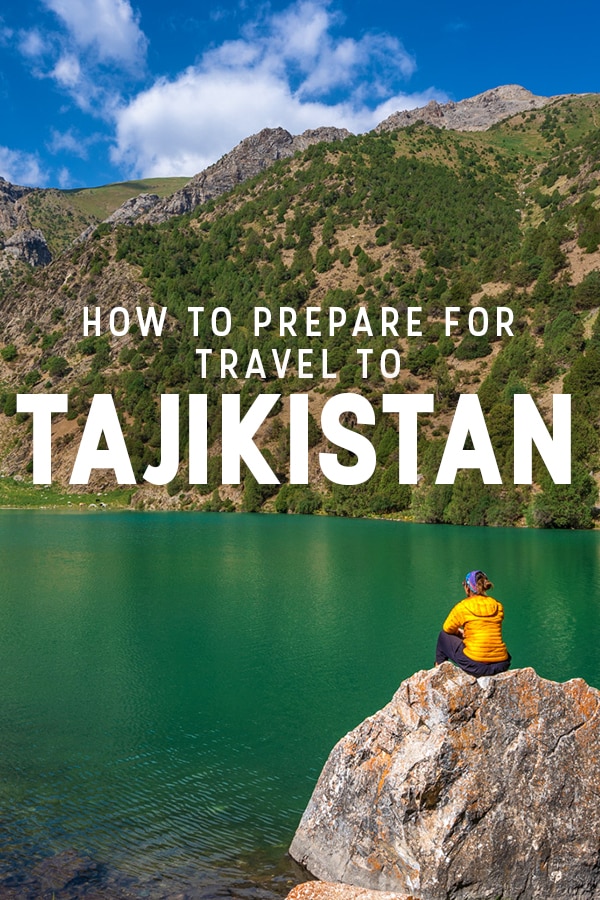
Pin it for later!
Yay transparency! This post contains affiliate links. If you buy something using my links, I’ll make a bit of cashmonies at no extra cost to you. No worries, I’d never recommend something I wouldn’t actually use. I’m not evil.
This publication/activity is made possible by the support of the American People through the United States Agency for International Development (USAID) Competitiveness, Trade, and Jobs Activity in Central Asia. The contents of this publication are the sole responsibility of Lost With Purpose (that’s me!) and do not necessarily reflect the views of USAID or the United States Government.
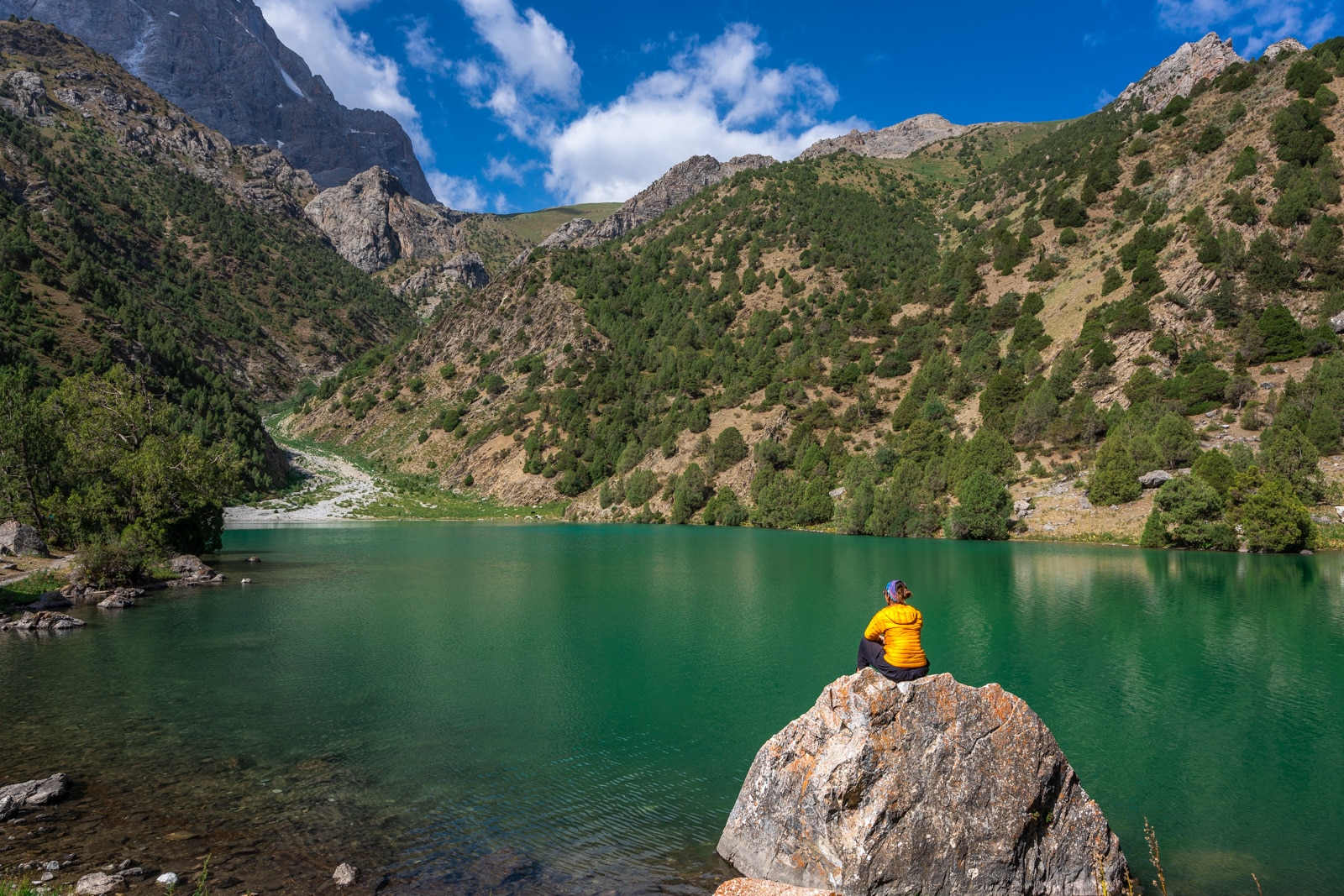


Was lead here by your later post “Why I can’t wait to travel Tajikistan again”. Sounds like Tajikistan has it’s fair share of pros and cons. It might not be for everyone but it might be a trip that everyone need to take. Thank you again.
The country is certainly not without challenges for travelers, but it’s definitely well worth the struggle! So long as you’re up for a bit of adventure and possibly some last minute changes of plan, you’re sure to have a grand time there 🙂
Hi Alex
Thank you sharing wonderful posts.
I have been in Tajikistan 2019 june. My itinerary was Fann mountains and Pamir highway totally 15 days. In Tajikistan is very difficult to contact with local tour operators, contacted a lot of companies but I didn’t get any answer for my questions. Only one company answered, calling Pegas Adventure. Manager he is very helpful, he helped a lot to organize my tour.
And in Tajikistan most of parts without internet connection, if yes only 2G.
People are very friendly, but most of them don’t speak English. I enjoyed a lot during 15 days. Would be recommend to joining group tour, if you take private transport, its expensive for solo travelers.
Popular places in Tajikistan:
Allaudin lake, Iskanderkul, Seven lakes, Khorog, Wakhan corridor, murgab, lenin peak base camp
I like travel to tajikistan
Please send me visit pass
I want to live hole of my life in tajiskan
Hello!!
Amazing blog!!
Do you know if now in the Covid era the e-visa is working? or I must go to the nearest embassy?
Same like gojal valley hunza Pakistan you know that!